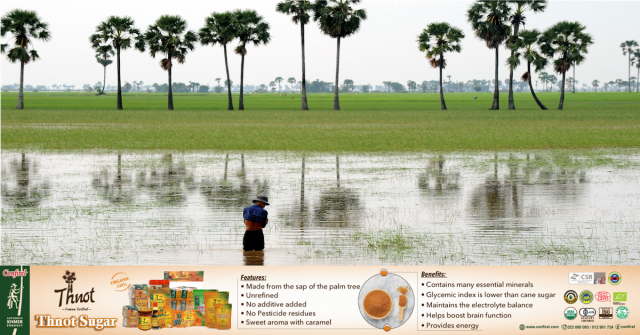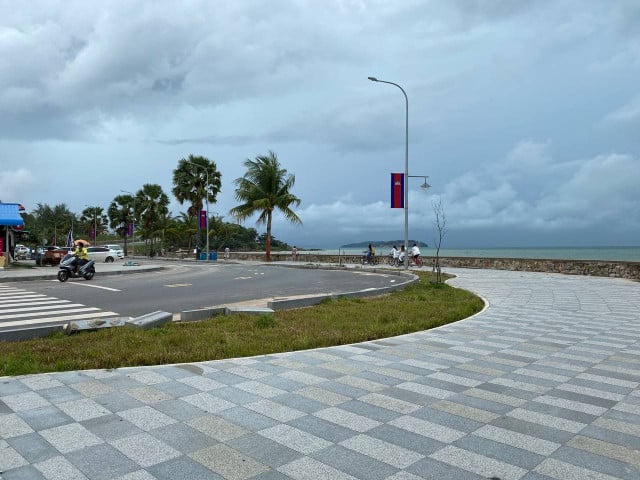Soon, Rice Fields without Farmers, without Oxen?

- By Cambodianess
- January 21, 2024 4:10 PM
An agricultural sector specialist with extensive knowledge of ASEAN countries he has been exploring for decades, Jean-Michel Gallet comes to Cambodia regularly and, with his camera over his shoulder, has seen farm mechanization progress at an accelerated pace in Cambodia. Is this a sign of a strong growth of farm revenues? According to him, the explanation is found elsewhere.
“Granted, since a little more than a decade, combine harvesters adapted to the size of the agricultural areas could be seen first and mainly on the rice-farm plains of Battambang province,” he writes.
“Granted, the rice produced in Cambodia for thousands of years mostly on terraces—as in 80 percent of the rice production—was done based on rain-fed rice, that is, in line with the rainy season, with one harvest per year,” Gallet writes. “But the proliferation of motor pumps drawing water from waterways or drilled sites had progressively, on a portion of the territory, enabled two rice harvests.
“But during all my previous visits to Cambodia, I still could observe a cart here, a barrow or plough there, pulled by an animal,” he writes. “In other words, the scenery and agricultural works in line with the traditional imagery of the country. However, during my usual winter motorcycle trek across Cambodia in late 2022/early 2023, to my great surprise, I could not see a single bull or oxen pulling a cart or any farm implement. Replaced by the cultivator or, more and more, by the tractor!
“Among the numerous examples come across,” Gallet writes. “During the winter of 2014-2015, near Kampong Cham, on the Koh Paen island linked to the Mekong River bank by a bamboo bridge, I had photographed a farmer ploughing his rice plot with oxen pulling a one-share plough. During the winter of 2022-2023, on this same island, I found fields of tens of hectares crossed by three tractors carrying out, at the same time, successive farm works: the first one harrowing, the second sowing, and the third one dropping off various inputs.
“Of course, large farm areas exploited are, still, an exception,” he writes. “Cambodian agriculture still is essentially based on a family model. A model, however, that emphasizes farm operations whose size increases in the course of the years.
“So, Cambodia’s agriculture undergoes the technical, demographic and economic evolution that the agricultural sectors of a world more and more urbanized experience,” Gallet writes. “Up to each to exercise one’s judgement on this evolution. But how in such a short period of time, that roughly of COVID-19, animal traction—a 1,000-year-old mode—could have disappeared from the agricultural landscape?
“There has not been a recent ‘sudden rise’ of the costs of agricultural products, and first of all of rice, which could explain farmers’ sudden increase in wealth,” he writes. “Quite often, even if each farm operation, here as everywhere around the world, has production costs different from another, these costs are barely covered by the products’ selling prices.
“So where is the answer: in real estate whose prices have recently exploded,” Gallet writes.
“Here are some examples,” he writes. “Members of an agricultural cooperative located in Kampong Speu province about 50 kilometers west of the capital told me that, in five years, land prices had gone up 30 to 100 percent according to the location in relation to transportation routes. As for land on which to build, prices could reach 150,000 euros [around $163,568] per hectare!
“The first and explanatory factor of this evolution is to be found outside agriculture, that is, in a non-agricultural economy that constantly requires more land,” Gallet writes. “So, according to government statistics, the number of factories has gone from 64 to 1,326 between 1997 and 2023. Moreover, a ‘middle class’ is emerging, looking for housing lots to live on and roads to move around. As much causes of pressure, even speculation, on agricultural real estate!
“It is not the growth of the agricultural sector and farmers’ revenues that explains this widespread use of mechanization, but external factors linked to Cambodia’s overall economic growth,” Gallet writes. “This is why from now on, visitors, except in presentations set up on purpose, will hardly ever come across a bull pulling a cart or a plough.”















